
Hey kids! Remember back in the 90s-2000s, people were convinced that video games made people violent? Or believed that video games were only violent shooters, and stuff like D&D and Pokemon were Satanic? These days, actual studies have shown video games by themselves don’t cause people to become violent or engage in violent acts, and luckily, that stereotype has mostly died out. But there are also people who believe that real games should only be shooters, action games, or overworld games, not those pesky RPGs, visual novels, farm sims, and so on. I think you guys know which camp I’m in. Video games, like all media, can be anything and everything their creators want them to be, whether they be action packed fantasies or down-to-earth, quiet farming sims. There’s really no restriction on their content anymore. Just look at the Boku no Natsuyasumi series, which are basically video games about kids playing in the countryside during their summer vacation and doing everything from fishing, catching bugs, hanging with friends, and so on. I’m only just starting to learn about the BokuNatsu series, but recently, a game that’s made by the same creators, Natsu-Mon: 20th Century Summer Kid, got an English release and came out on Switch and PC. It looked cute, so I played the demo and thoroughly enjoyed it. 30 hours in, and I’m totally hooked!
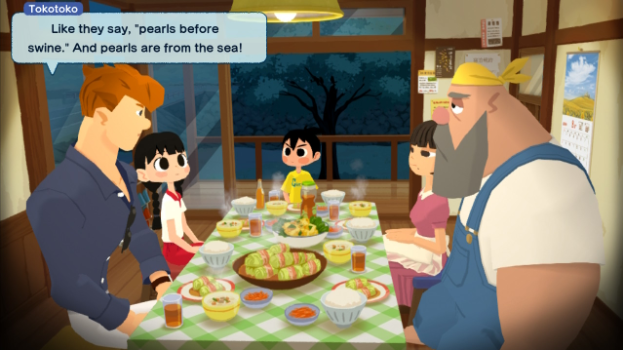
Natsu-Mon: 20th Century Summer Kid has you playing the role of a 10-year-old boy named Satoru, whose family runs a traveling circus troupe. In August of 1999, the troupe stops at the tiny Yomogi Town, staying there for a month before going back on the road yet again. Since it’s summer break, Satoru has the entire month to just do whatever he wants, be it exploring, catching bugs, going fishing, playing with new friends, getting to know the townsfolk, climbing trees, helping with various tasks around town, and going on all sorts of fun adventures, documenting them all in his sketchbook. There is the plot thread of the circus having financial trouble, but the game gives you the freedom to do whatever you want every day, and the game doesn’t expect you to fulfill any pressing objectives unless you want to unlock one of many multiple endings, all of which involve Satoru’s future occupation.
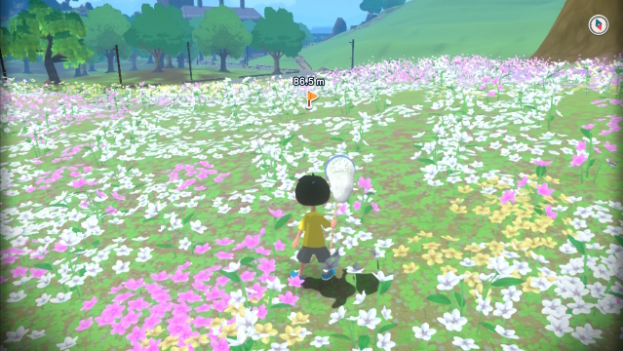
Unlike the regular Boku no Natsuyasumi games, which primarily used 3D character sprites against pre-rendered 2D backgrounds and set camera angles, Natsu-Mon is a fully 3D open-world game. Natsu-Mon encourages you to climb the highest peaks and explore every nook and cranny there is, with no shortage of side quests and goals to fulfill at however pace you wish, whether it be finding out who’s letting the pigs out of the pen or exploring the old castle outside of town. Don’t go into this game expecting any action, fighting, or over-the-top drama. Fitting the game’s more exploration-oriented gameplay, Satoru can swim (Unlike BokuNatsu 2, you can’t dive underwater), climb, jump, and run, though early on, you don’t have much stamina to do a whole lot of it. You can gain more by earning stickers, which you receive as rewards from fulfilling objectives both big and small, and the more you get, the more exploring you can do, which really helps in trying to access the harder to reach spots, before you get tired. For any of you casual gamers out there, Natsu-Mon allows you to adjust how quickly time passes so you can get in as much exploring as you want. I really appreciate this, as I’m someone who really likes to take my time and enjoy whatever game I’m playing has to offer, along with doing as much as I’m able.
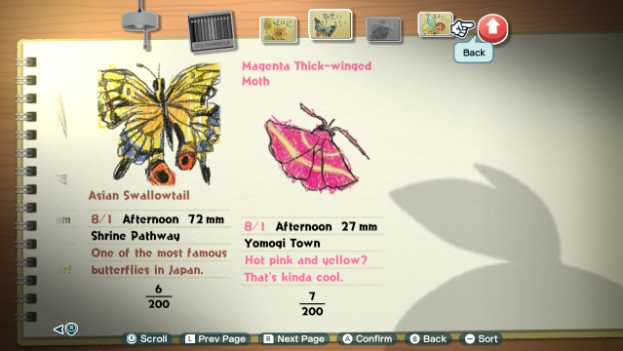
The exploration aspect is elevated by the game’s stellar, delightful art direction. Natsu-Mon is bright, colorful, and brimming with cheer, and even though assets like trees and grasslands are a little flat, and there is clipping on occasion, the game itself more than manages to make up for it with its overall warm, inviting atmosphere, all seen through the eyes of a curious, inquisitive child. Satoru’s drawings in his picture diary manage to perfectly capture the creative yet unpolished way a child with that level of motor skills can draw. The in-game character sprites, their designs created by famed Pokemon card artist Hyogonosuke, are cute and well-rendered, and I love the little details that are peppered throughout the game, such as the insect sprites all being unique in the overworld and how during the festivals or fireworks displays, some characters will change into yukatas for the occasion. The cartoony graphics and aesthetically pleasing environments all match the game’s tranquil atmosphere and narrative direction.
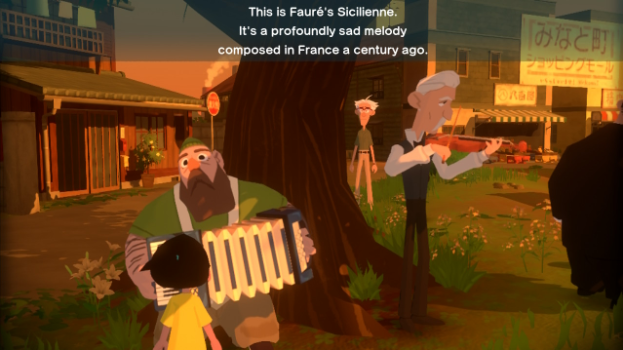
But attention to detail isn’t just limited to art direction. Since the game is very explicitly set during the late nineties, you can’t afford to mess around with details regarding the time period or else you risk not being accurate to history. Since Boku no Natsuyasumi creator Kaz Ayabe and his team at Millennium Kitchen have years of experience doing this with BokuNatsu, they brought their A-game to Natsu-Mon, and I’m glad to say that they really pulled it off. There’s no sign of modern technology such as smartphones or wide screen TVs, some characters mention on the anniversary of World War II that their parents were elementary school kids when the war happened, and one detail I managed to catch was one of the characters, Junko, mentioning that people thought the world was going to end in July of 1999. For anyone who doesn’t know, for a brief time, Japan was obsessed with a book called The Prophecies of Nostradamus, published in 1973 by Ben Goto, and one of Nostradamus’ prophecies was that a king of terror would appear from the sky during the seventh month of 1999. It was quite a talking point in Japanese pop culture at the time, and many were convinced it signaled the end of the world. Want to know how I even learned about this? You can thank Discotek Media’s Digimon Adventure blu-ray liner notes, specifically the ones for episode 21. Hell, I swear to God this game straight out references the actual first Boku no Natsuyasumi game in that a reporter character mentions that a game company came to the neighboring town to take photos and get information on it, but said game got delayed another year, which is exactly what happened with the first BokuNatsu game IRL!
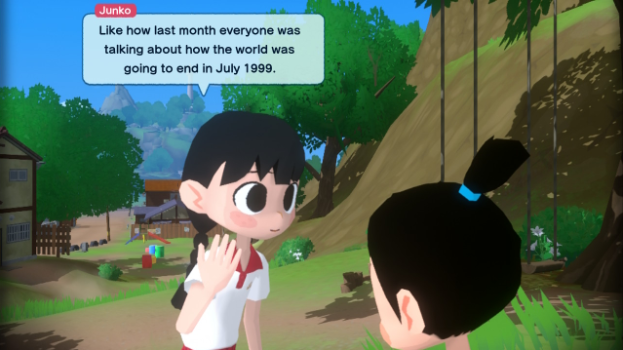
Weird, country-specific historical references aside, I’d like to talk about the characters. Don’t go into this game expecting the characters to evolve and change drastically. Since this game has extremely low stakes and doesn’t try to hide the fact that it’s a slice-of-life game above all else, the characters and their personalities pretty much stay the same throughout the entirety of Natsu-Mon. But that’s not to say they aren’t charming, interesting, or well-rounded. Every character has their own set schedule to follow, and there are plenty of event scenarios peppered throughout the game that you can unlock, giving Satoru, and by extension you the player, the chance to get to know them better. Not only that, any interpersonal conflicts they have are not only resolved pretty easily, but remain down-to-earth and don’t rely on a lot of the over-the-top melodrama and angst other series tend to do. Everyone in Natsu-Mon is friendly and welcoming, though not to an overly saccharine degree, and Natsu-Mon as a game nails the feeling of being part of a tight-knit community. There’s always something going on in town no matter how small. Gotta admit, Junko is my favorite character and I loved all the events involving her.
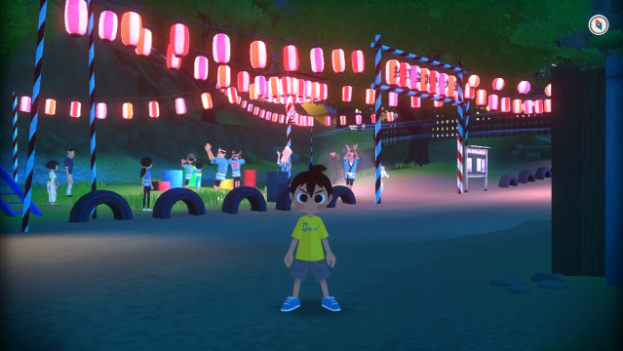
The game isn’t perfect though. I didn’t mind the occasionally low poly sprites, bouts of low frame rates, and the awkward draw distance, but the jumping/platforming mechanics aren’t as tight as they should be. When Satoru jumps, you’re not always going to land where you want to. This is especially prominent early on, when you have to do the sidequest with the shrine lanterns. If you gain a certain amount of stickers, you can unlock the double jump, but you can’t do that until later. Also, certain events involving certain characters can’t happen unless they’re in a specific location, and oftentimes, the characters required for you to interact with aren’t in the location where you can activate it. Caught some fish for tonight’s dinner but need to talk to Kyoko so she can cook it? Nah, Kyoko’s outside talking to the detective and is gonna stay there the whole day, leaving your fresh catch totally wasted. Caught 18 bees for Hachiya? You better hope you find him at the apiary, because that’s the only time you can give the bees to him, and oftentimes he’s not there! Making this more complicated is that there’s nothing that tells you if the characters have a set schedule, so there’s no way to figure out when they’ll be in the locations required, or if they’re going to be locked in an event for that day.
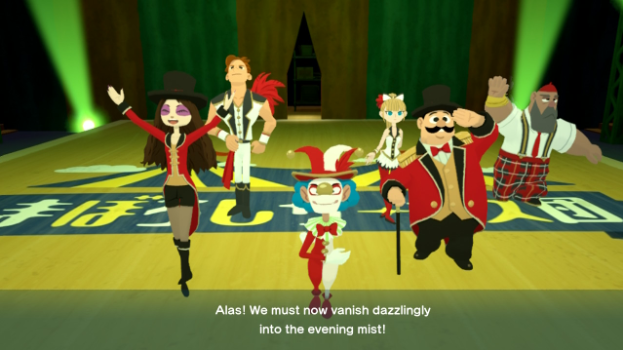
My only other gripe isn’t with the game itself, but with the English translation. For the most part, the English translation is fine, but I found three things wrong with it: For some reason, someone thought it was a good idea to have some characters say 2020s slang in a game that’s CLEARLY set in 1999. One character says “sweet summer child” and another says “I’m so jelly” even though those phrases were not in use during the nineties. Granted, they don’t come up very often, and there are only two instances of this throughout the game, but having grown up during the 2000s, nobody said that stuff until the 2020s or slightly earlier. Like…did the translator who worked on this do their research at all? Second, who decided to translate “itadakimasu” as “thank you, food”?! It’s so clunky, wonky, and makes absolutely no sense whatsoever! Why not go with “thanks for the food” or “let’s dig in!” or “bon appetit” or something? Also, there was one line that somehow was left completely untranslated, which is where you release fish and are asked if you really want to release them or not. How in the world did the staff at Spike Chunsoft miss this?!
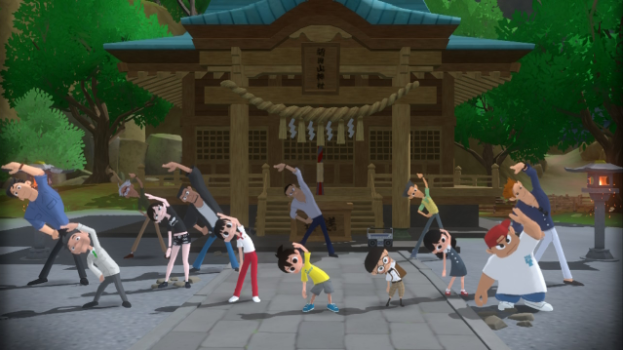
Granted, none of this killed my enjoyment of Natsu-Mon at all. I’m really glad I decided to try this game out. Natsu-Mon: 20th Century Summer Kid is a cute, wholesome, low-key game that perfectly captures the warmth, whimsy, and nostalgia of childhood, especially one from a bygone time. It’ll make you want to look back on your own childhood, back when you probably spent your summer breaks playing with your friends or having fun. Now if only Natsu-Mon had a physical version I can own forever. As of now, Natsu-Mon is only available digitally, and the only physical version is Japan exclusive and has no English translation. For all I know, maybe Limited Run Games will put out a physical version in the future. If that happens, I’ll be on that like a hawk! Now that I’ve played Natsu-Mon, I want to play more games like this, preferably the rest of the Boku no Natsuyasumi series, though only one of the original games got a fan-made English translation recently. I do own another game this same team put out, Attack of the Friday Monsters: A Tokyo Tale. I should probably start playing that at some point, and I hear that one’s really good, too.
